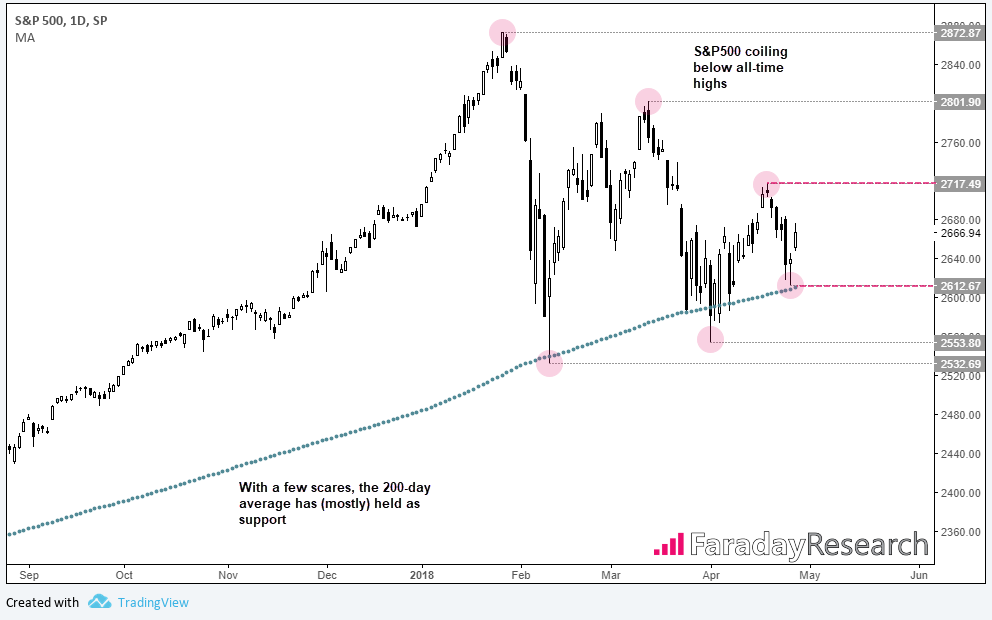Most would agree that 2018 has not proven to be the best start to the year. In fact, by some metrics it’s one of the worst. But as volatility has subsided on the S&P 500 whilst it coils between key levels, we await the next volatility surge and wonder what this mean for global markets as we plow through Q2.
When we last discussed the S&P 500 it was seriously considering a break below its 200-day average. One choppy month later and a failed bearish break, bulls have yet to relinquish control. The lack of a dominant force has resulted in a coiling formation below the January highs with peaks and troughs converging within a tighter range. We find this of great interest because, with volatility falling, it will of course have to return. And if volatility returns on the S&P500, chances are it could be a widespread theme for global markets (or global indices at the very least).

Despite a near-12% fall from the 2872.87 high, it’s not hard to argue that the index remains in a longer-term uptrend. So, this could in fact favour the next major leg of volatility to result in a bullish break. Such a move could be confirmed with a clear break of 2717.49 which would invalidate the coiling formation and retain the longer-term bullish trend. The chances are it would also be accompanied with a wide-spread risk-on environment too; risk-assets higher, safe-havens lower.
But if we are to see it break decisively lower (and stay there this time) sentiment for global markets would likely be very different. The VIX could spike higher and haven assets such as bonds could see inflows to drag yields lower. Gold could shine again and risker assets such as AUD and NZD would find themselves under even more pressure.
The point here is not necessarily try to time the break, but simply be aware that when volatility returns it will likely have a directional breakout for the S&P500. And associated with that will be sentiment for global markets. We may not be able to perfectly time such a volatile spike, but we can at least heed the warning signs from a barometer of risk. And that warning is a 2-month coiling formation between the S&P 500’s all-time highs and 200-day average which could be fast approaching a breakout one way or the other.
